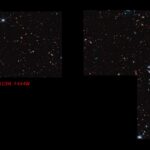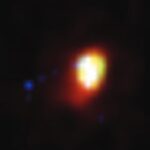
How do you define noon? There are two ways. 12:00 p.m. on the clock when the sun is at its highest point in the sky, directly south in the northern hemisphere; this is solar noon. In Lynchburg, Virginia on December…

Quick! What’s the nearest star to Earth? Not counting the Sun, because this is not a trick question. If you answered Proxima Centauri, you can count yourself among the astronomically knowledgeable. Its distance of 4.25 light years means it is…

The James Webb Space Telescope (JWST) has elicited well-deserved plaudits for its ability to peer far back into the early days of our universe, only a few hundred million years after the Big Bang that birthed it. Webb’s infrared vision…

“No one was expecting anything like this.” So says Michael Boylan-Kolchin of the University of Texas, Austin in a recent issue of Science. As I would tell my astronomy students, this is when things begin to get interesting. The James…

In the post previous to this one, we discussed two of the five operational images released from the James Webb Space Telescope (JWST) on July 12th. Let’s take a look at the remaining three. A QUINTET OF GALAXIES (OR IS…